Related Research Articles

The Australian Army is the principal land warfare force of Australia, a part of the Australian Defence Force (ADF) along with the Royal Australian Navy and the Royal Australian Air Force. The Army is commanded by the Chief of Army (CA), who is subordinate to the Chief of the Defence Force (CDF) who commands the ADF. The CA is also directly responsible to the Minister for Defence, with the Department of Defence administering the ADF and the Army.
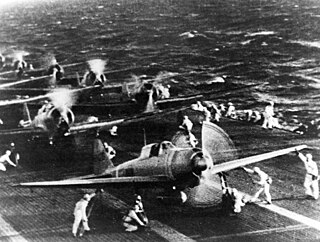
The Pacific War, sometimes called the Asia–Pacific War, was the theater of World War II that was fought in Asia, the Pacific Ocean, the Indian Ocean, and Oceania. It was geographically the largest theater of the war, including the vast Pacific Ocean theater, the South West Pacific theater,, the Second Sino-Japanese War, and the Soviet–Japanese War.
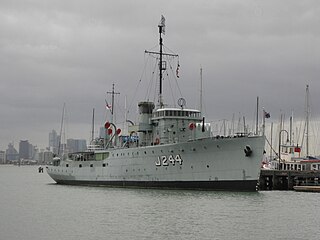
HMAS Castlemaine (J244/M244/A248), named for the city of Castlemaine, Victoria, was one of 60 Bathurst-class corvettes constructed during World War II, and one of 36 initially crewed and commissioned solely by the Royal Australian Navy (RAN).

The Battle of the Java Sea was a decisive naval battle of the Pacific campaign of World War II.

The Fall of Singapore, also known as the Battle of Singapore, took place in the South–East Asian theatre of the Pacific War. The Empire of Japan captured the British stronghold of Singapore—nicknamed the "Gibraltar of the East"—with fighting in Singapore lasting from 8 to 15 February 1942. Singapore was the foremost British military base and economic port in South–East Asia and under the Singapore strategy was important to British interwar defence planning for the region. The capture of Singapore resulted in the largest British surrender in history.

The Battle of Timor occurred in Portuguese Timor and Dutch Timor during the Second World War. Japanese forces invaded the island on 20 February 1942 and were resisted by a small, under-equipped force of Allied military personnel—known as Sparrow Force—predominantly from Australia, United Kingdom, and the Dutch East Indies. Following a brief but stout resistance, the Japanese succeeded in forcing the surrender of the bulk of the Allied force after three days of fighting, although several hundred Australian commandos continued to wage an unconventional raiding campaign. They were resupplied by aircraft and vessels, based mostly in Darwin, Australia, about 650 km (400 mi) to the southeast, across the Timor Sea. During the subsequent fighting, the Japanese suffered heavy casualties, but they were eventually able to contain the Australians.

The Malayan campaign was a military campaign fought by Allied and Axis forces in Malaya, from 8 December 1941 – 15 February 1942 during the Second World War. It was dominated by land battles between British Commonwealth army units, and the Imperial Japanese Army with minor skirmishes at the beginning of the campaign between British Commonwealth and Royal Thai Armed Forces. The Japanese had air and naval supremacy from the opening days of the campaign. For the British, Indian, Australian and Malayan forces defending the colony, the campaign was a total disaster.

The Borneo campaign of 1945 was the last major Allied campaign in the South West Pacific Area during World War II to liberate Japanese-held British Borneo and Dutch Borneo. Designated collectively as Operation Oboe, a series of amphibious assaults between 1 May and 21 July were conducted by the Australian I Corps, under Lieutenant-General Leslie Morshead, against Imperial Japanese forces who had been occupying the island since late 1941 – early 1942. The main Japanese formation on the island was the Thirty-Seventh Army under Lieutenant-General Masao Baba, while the naval garrison was commanded by Vice-Admiral Michiaki Kamada. The Australian ground forces were supported by US and other Allied air and naval forces, with the US providing the bulk of the shipping and logistic support necessary to conduct the operation. The campaign was initially planned to involve six stages, but eventually landings were undertaken at four locations: Tarakan, Labuan, North Borneo and Balikpapan. Guerilla operations were also carried out by Dayak tribesmen and small numbers of Allied personnel in the interior of the island. While major combat operations were concluded by mid-July, mopping-up operations continued throughout Borneo until the end of the war in August. Initially intended to secure vital airfields and port facilities to support future operations, preparatory bombardment resulted in heavy damage to the island's infrastructure, including its oil production facilities. As a result, the strategic benefits the Allies gained from the campaign were negligible.
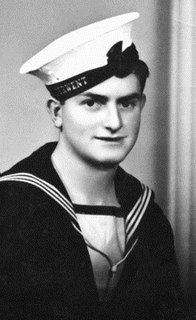
Edward "Teddy" Sheean, was a sailor in the Royal Australian Navy during the Second World War. Born in Tasmania, Sheean was employed as a farm labourer when he enlisted in the Royal Australian Naval Reserve in April 1941. Following training at HMAS Derwent and the Flinders Naval Depot, he was posted to Sydney, where he joined the newly commissioned corvette HMAS Armidale in June 1942. Sheean served aboard Armidale as she took part in escort duties along the eastern Australian coast and in New Guinea waters. In October he transferred with the ship to Darwin, where Armidale was tasked with assisting Australian operations in Timor.
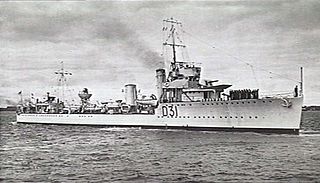
HMAS Voyager (D31/I31) was a W-class destroyer of the Royal Navy (RN) and Royal Australian Navy (RAN). Commissioned into the RN in 1918, the destroyer remained in RN service until 1933, when she was transferred to the RAN. Recommissioned, Voyager served in the Mediterranean and Pacific theatres of World War II until 23 September 1942, when she ran aground while trying to deliver troops to Timor. The ship was damaged by Japanese bombers while trying to refloat, then was scuttled by her crew.

Sparrow Force was a detachment based on the 2/40th Australian Infantry Battalion and other Dutch, British, US and Australian 8th Division units during World War II. The force was formed to defend the island of Timor from invasion by the Empire of Japan. It formed the main part of the Allied units in the Battle of Timor.

The New Guinea campaign of the Pacific War lasted from January 1942 until the end of the war in August 1945. During the initial phase in early 1942, the Empire of Japan invaded the Australian-administered Mandated Territory of New Guinea and the Australian Territory of Papua and overran western New Guinea, which was a part of the Netherlands East Indies. During the second phase, lasting from late 1942 until the Japanese surrender, the Allies—consisting primarily of Australian forces—cleared the Japanese first from Papua, then the Mandate and finally from the Dutch colony.
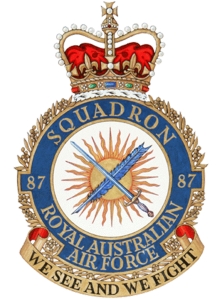
No. 87 Squadron is a Royal Australian Air Force (RAAF) air intelligence squadron. It saw action during World War II as a photo reconnaissance squadron, being raised in September 1944 through the re-designation of No. 1 Photo Reconnaissance Unit, which had been formed in June 1942. Throughout the war, No. 87 Squadron flew a variety of aircraft from bases in Australia, gathering photographic intelligence on Japanese forces and installations throughout the Pacific. At the conclusion of hostilities, the squadron was disbanded but was later re-formed in 1948, carrying out aerial survey operations in Australia until 1953. In 2006, it was re-raised again as a non-flying squadron tasked with air intelligence analysis as part of the Information Warfare Directorate within the RAAF's Air Warfare Centre.

HMAS Armidale (J240), named for the city of Armidale, New South Wales, was one of 60 Bathurst-class corvettes constructed during World War II, and one of 36 initially manned and commissioned solely by the Royal Australian Navy (RAN).

Australia entered World War II on 3 September 1939, following the government's acceptance of the United Kingdom's declaration of war on Nazi Germany. Australia later entered into a state of war with other members of the Axis powers, including the Kingdom of Italy on 11 June 1940, and the Empire of Japan on 9 December 1941. By the end of the war, almost a million Australians had served in the armed forces, whose military units fought primarily in the European theatre, North African campaign, and the South West Pacific theatre. In addition, Australia came under direct attack for the first time in its post-colonial history. Its casualties from enemy action during the war were 27,073 killed and 23,477 wounded. Many more suffered from tropical disease, hunger, and harsh conditions in captivity: of the 21,467 Australian prisoners taken by the Japanese only 14,000 survived.
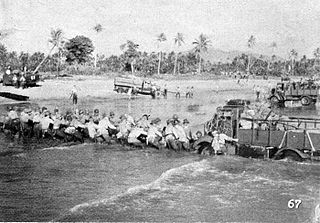
The Dutch East Indies campaign of 1941–1942 was the conquest of the Dutch East Indies by forces from the Empire of Japan in the early days of the Pacific campaign of World War II. Forces from the Allies attempted unsuccessfully to defend the islands. The East Indies were targeted by the Japanese for their rich oil resources which would become a vital asset during the war. The campaign and subsequent three and a half year Japanese occupation was also a major factor in the end of Dutch colonial rule in the region.
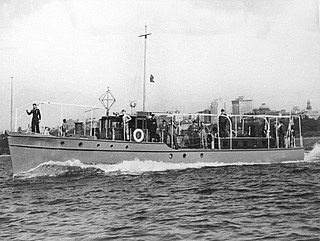
HMAS Kuru was an auxiliary patrol boat operated by the Royal Australian Navy (RAN) during World War II. Constructed in 1938 for the Northern Territory Patrol Service, Kuru was requisitioned by the RAN following the Japanese declaration of war in December 1941. The ship operated from Darwin, and was one of the vessels used to keep Allied troops in Timor resupplied following the Japanese invasion. Kuru operated until 1943, when she was damaged beyond repair in an accident.

The 28th Bomb Squadron is a squadron of the United States Air Force. It is assigned to the 7th Operations Group, Global Strike Command, stationed at Dyess Air Force Base, Texas. The squadron is equipped with the Rockwell B-1B Lancer.
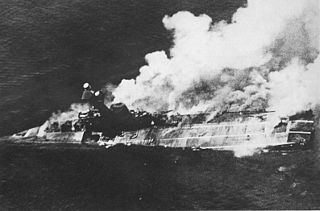
Prior to World War II, the Indian Ocean was an important maritime trade route between European nations and their colonial territories in East Africa, the Arabian Peninsula, British India, Indochina, the East Indies (Indonesia), and Australia for a long time. Naval presence was dominated by the Royal Navy Eastern Fleet and the Royal Australian Navy as World War II began, with a major portion of the Royal Netherlands Navy operating in the Dutch East Indies and the Red Sea Flotilla of the Italian Regia Marina operating from Massawa.
The Raid on Salamaua was a conducted by Australian commandoes during the New Guinea campaign of World War II on 28 June 1942. It has been called the first offensive action on land against the Japanese in World War II. The raid was undertaken by 2/5th Independent Company under the command of Captain Norman Winning. According to one account, "The raid has been acclaimed as a copybook action for its diligent scouting, meticulous planning and audacious, multi-pronged attack against an enemy force 10 times the attackers' strength. All without loss of life."
References
- ↑ "Timor Campaign". Australians at War Film Archive. Department of Veterans' Affairs. Archived from the original on 28 February 2015. Retrieved 27 September 2015.
- ↑ "THE SATURDAY PAGE". The Canberra Times . 18 October 1975. p. 11. Retrieved 25 September 2015– via National Library of Australia.
- ↑ "The loss of the Armidale". Allies in Adversity: Australia and the Dutch in the Pacific War. Australian War Memorial. Retrieved 27 September 2015.